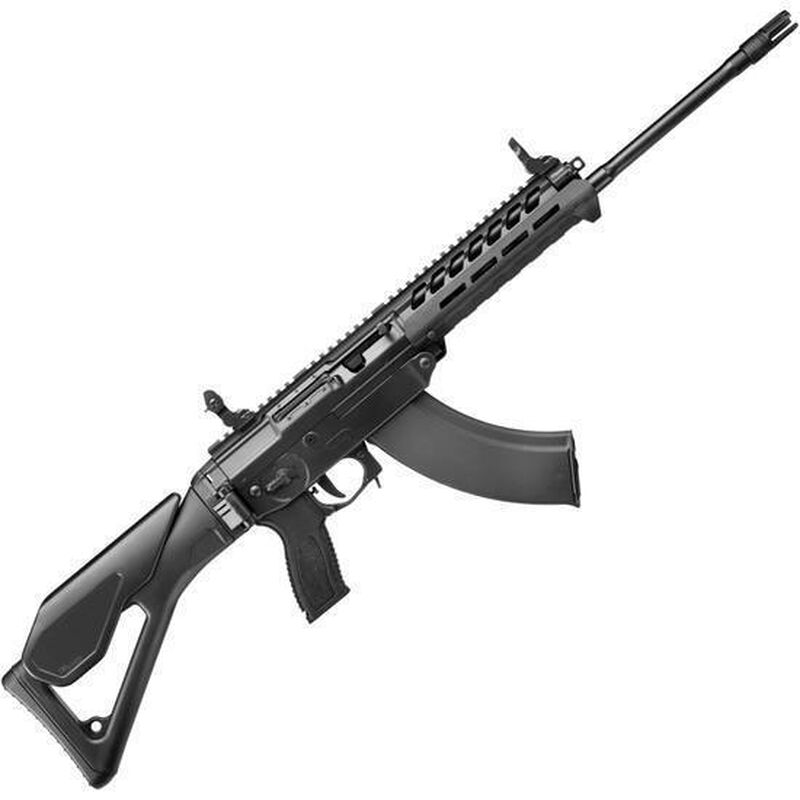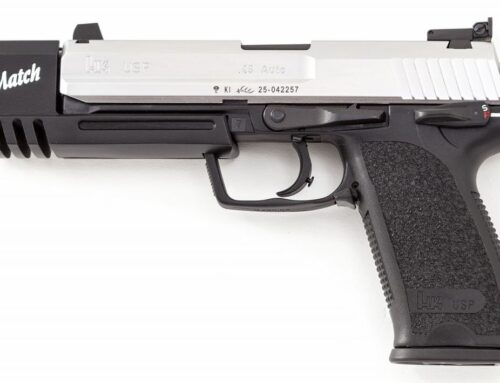It hadn’t been my intention to review three Sigs in a row but last month’s MCX article opened the door for a rare opportunity. Before the AR’s, the MCX/MPX series, and the 320 pistols, Sig had tried to bring another interesting modern sporting rifle to the American market with the “556” line. Unfortunately it never did very well and was discontinued after a relatively short life despite having a deeper history on the other side of the globe. After having some hands-on time with one of these rifles I tried to piece together why the 556 line of rifles never gained traction.
The 556’s lineage dates way back to the late 70’s with the SG 510 but it isn’t until the late 80’s where we would start to see the more recognized form. In 1990 the Swiss military adopted the most up to date version, the SG 550, as the Stgw 90. I believe it is still seeing military service to this day along with some variations such as the 551 and 552 which have shorter barrels. A sniper variant also existed.
There’s no question that these rifles have been popular and proven their worth overseas. What happened, then? Evidence of its evolution to the American market is clear when the 550 series makes the jump to the 556 designation. Instead of using the original translucent polymer rock and lock magazines they were changed to take AR-15 magazines. On later models the charging handle could be swapped to the left side of the receiver. Traditional fixed iron sights were done away with in favor of more Picatinny rail space. Furniture was redesigned, in some cases being unnecessarily over-detailed. Some models took AR-15 stocks. After a time it was offered in 7.62×39 as well, which led to equally confusing “556R” and “556XI” designations despite not being chambered in 5.56.
This is where I feel the trouble lies. In an attempt to update the rifle for this different audience these rifles lost their identity. Instead of getting a civilian version of a famous and successful European rifle we got the “enhanced” version which barely looked like what it had once been. Fast forward to now and the profile of some of these rifles start to resemble a Galil ACE more than a Sig 550.
To many shooters, if it takes AR mags then why not just get an AR for half of the price or less? This is the difficult question manufacturers face when dealing with this country. Some models meet success while others seem to fail right out of the gate. These kinds of firearms have always been more of a niche market, only devoted fans or collectors are likely going to gravitate toward them compared to what’s more common and affordable. Having one which takes a proprietary magazine only further complicates them being sold, though many STANAG mag compatible models have already come and gone.
In trying to appeal to the wider customer base I feel that the 556 had tried too hard to be something it was never intended to be. Normal shooters would question spending the extra money while those in the know were left disappointed that it had departed so much from its origins.
Sig seemed to have recognized this as over time the 556 started to tone it down a little. This 556XI even had a classic 550 style side folding stock which I was very pleased to see. While the handguard was nowhere near original this later iteration did feel like it finally nailed what I would have wanted from an updated design. It both looked and felt good while appearing like it belonged. At first glance it seemed like it might have had M-LOK on the sides but those are merely vent holes. I believe this was before M-LOK really took off.
Back around 2008 Sig also came out with the “556 Classic” which was meant to better imitate the 550 series, however it still took AR-15 magazines which prevented it from having the iconic profile of the originals.
In addition, the 7.62×39 variants had some teething issues. The initial 556R (the “R” being for the Russian caliber) suffered reliability problems so much that it was pulled from the market, reworked, then reintroduced as the 556XI which was the last of the breed.
Regrettably I have to admit the 556XI is worthy of its poor reputation, though I do feel like it could have been saved had Sig held on for a while longer to work out the kinks and bring back some of its former identity.
The 556XI still remains a curious rifle with some of the most interesting quirks I’ve yet encountered. The basic stuff includes an ambi safety, a three position gas system, AK magazine compatibility, a side folding stock which is not adjustable for length of pull but does have a detachable cheek riser, a charging handle which can be swapped to either side, and decent overall balance.
What is vastly more interesting to me is the manual bolt catch works completely opposite to every other firearm I’ve used. To lock the bolt open you hold down on the lever. To release you push UP. I’m pretty good at switching between platforms but this one control kept throwing me. It’s hard to explain yet way too satisfying to rock a new mag in then thumb the lever up to put one in the chamber.
This isn’t the only reversed operation. The upper and lower are held together with two pins much like an AR but looking under the hood it took me a moment to realize something was missing. There weren’t any recoil springs! No guide rods to speak of. This is because these rifles use a reverse recoil system where the bolt is being pulled rather than pushed. It’s no wonder they had folding stocks from the very beginning, there’s absolutely no reason not to include one.
Back to the mundane, the 556XI has a two stage trigger which is quite heavy and has a strong return spring. I can’t accurately describe how much effort it took to keep the trigger fully depressed, it’s a strong spring and it so wants to reset as soon as the shot’s been taken. This could be useful if the rifle took a mud bath but it does not make for a pleasant afternoon at the range, it’s among the stiffest triggers I’ve ever seen in a sporting rifle.
The 556XI does feed from standard AK pattern magazines but it doesn’t perform as well as an AK rifle. The tab mag release is extended compared to a standard AK which is nice but it’s coupled with a very stiff spring and a pivot point which is closer to the receiver compared to an AK which pivots right around the middle. This makes for an incredibly stiff control. Magazines are both difficult to fully seat even with the bolt locked open and difficult enough to remove that I almost couldn’t do it when my hands got cold.
I’m not sure if the rear grip can be replaced but I don’t expect there to be a huge market for replacements. The one which came standard on the 556XI was comfortable enough but quite small. Between the lack of real estate and the long and heavy pull I had to keep tucking my thumb out of the way so the index finger had somewhere to travel to. It was far from ideal.
Inside the 556XI is a rotating bolt which looks like it was pulled right out of an AK. In keeping with the theme the charging handle is also quite stiff though in its defense this particular rifle hadn’t been shot much. While positioned on the right side I couldn’t quite draw it fully back when doing the AK underhand rack but I’m no master of this technique. It favors decisive action, regardless.
The safety is ambidextrous and this seems to have been part of the original 550 design. I found it somewhat awkward to reach and had to break my grip to reach it with the thumb. The upshot is that the right side was far enough away from my hand that it didn’t get in the way while shooting.
The 556XI is not a lightweight rifle, feeling about on par with a milled receiver AK. Recoil was nothing I wasn’t expecting, comfortably stout and again very familiar to an AK. But I have to be honest here, there is no way the 556XI is going to be a replacement for a proper AK pattern rifle.
Are these reasons why the 556 series failed? If I picked up a legitimate issued 550 series rifle and tried it out would I have found the controls too stiff and the rifle a bit too heavy for my liking? Perhaps. The thing is, with a classic 550 rifle I could at least say that’s how they were made back then. After all, decades later we’re all still using T charging handles in our AR’s.
What ultimately ended the 556 line is likely a multitude of details. A quick image search showed how many variations of these rifles had come to market in a relatively short period of time. It seemed like every few months the 556 line underwent another facelift. I believe it was a combination of these numerous revisions, the overall price, and certainly the trigger, the one area where the 556 truly would have benefitted from an update.
The 556 series still has enough going on that it interests me. It’s a cool rifle with some unique features and it does still have pedigree. Unfortunately it’s not the kind of gun I would want to spend an entire afternoon shooting, and that seems to be the bottom line.








